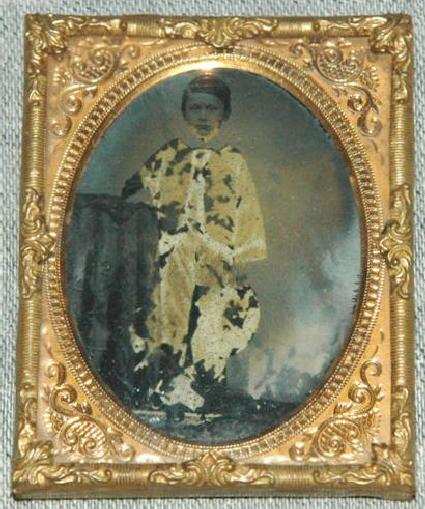
Ambrotypes: Collodion Positives--Dark Backing

Figure 1.--This Ambrotype pportrait shows a 6-year old boy in 1860. The portrait is dated, but the boy is not idntified. This one needs a new black backgound, as the original black was was alacquer coting is flaking badly. No case, but it still has the brass mat. From an estate from Danvers, Massachusetts.
|
|
Ambrotypes were normally mounted against black backing appearing like a positive. Ambrotypes, tintypes made the Daguerreotype a dead art. Reaerachers working on negatives found that if an extremely thin, under-exposed negative is placed in front of a dark background, the image gives the illusion of a positive. This was because the silver reflected light, The areas without silver appeared black. This was the principle behind the Ambrotype process, the pictures being more correctly known as collodion positives. The dark background was commonly black velvet. Less commonly black varnish behind the glass plate was used. The Ambro here had a black lacquer varnish behind the glass plate. You can see the result whhen it begins to flake. The backing was often but not always black. A dark colored backing could add the appearance of color.
HBC

Navigate the Boys' Historical Clothing Web Site:
[Return to:Main Ambrotype collodion positive page]
[Return to:Main Ambrotype page]
[Introduction]
[Activities]
[Biographies]
[Chronology]
[Clothing styles]
[Countries]
[Bibliographies]
[Contributions]
[FAQs]
[Glossaries]
[Images]
[Links]
[Registration]
[Tools]
[Boys' Clothing Home]
Navigate the Boys' Historical Clothing Web Site:
[Hair styles]
[Shirts]
[Suits]
[Tunics]
Created: 10:13 PM 10/13/2008
Last updated: 10:13 PM 10/13/2008



